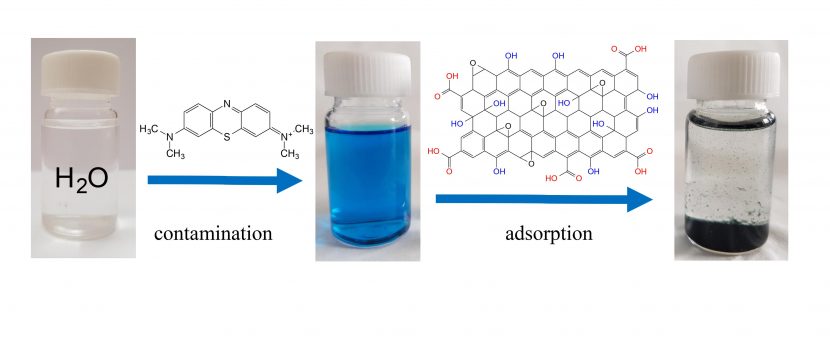
Carbon nanomaterials as an effective tool for removing dyes from the environment
Carbon nanomaterials include many materials such as carbon nanotubes, graphene, graphene oxide and fullerenes. The properties and chemical nature of individual carbon materials are related to their structure and the presence of other elements in the carbon skeleton. The basis of all carbon materials is a honeycomb-like structure, which is arranged in one of the higher structures (tube, multilayer, sphere, etc.). Our work focuses on using monolayer graphene oxide (GO) to remove methylene blue from model solutions with different pH. Graphene oxide can be described as a monolayer of carbon atoms arranged in the form of a carbon honeycomb with surface functional groups. These groups ensure that graphene oxide is hydrophobic and facilitate interaction with polar substances. The research aimed to investigate the material’s ability to remove dye from solutions as well as the influence of GO surface functional groups. Among other things, we focused on studying the mutual interaction between GO and the dye, which was confirmed by infrared spectrometry and X-ray diffraction. The GO was prepared by us using a simple, fast and cheap method from natural graphite and showed high adsorption capacity (up to 803 mg/g) and speed in removing methylene blue. Compared to other materials and composites, up to 140 times higher efficiency was achieved in some cases.
J. Ederer, P. Ecorchard, M. Šrámová Slušná, J. Tolasz, D. Smržová, S. Lupínková, P. Janoš.
A Study of Methylene Blue Dye Interaction and Adsorption by Monolayer Graphene oxide. Adsorption & Science Technology 2022.
Link to the paper: https://www.hindawi.com/journals/ast/2022/7385541/
The archive of other published articles can be found here